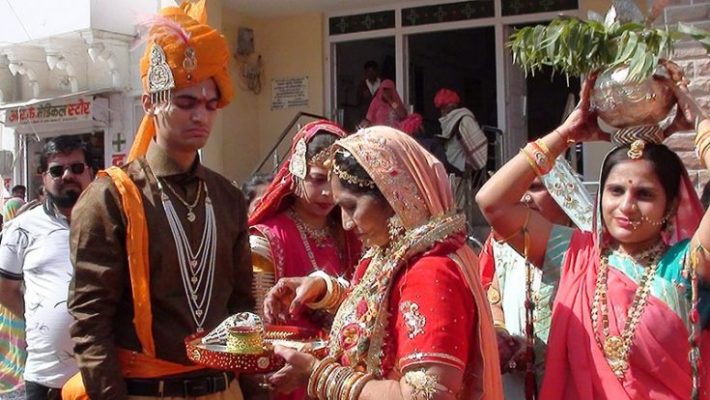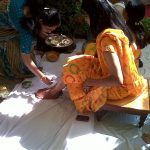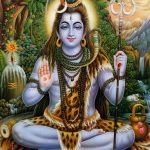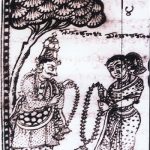Marwari wedding rituals are fun and meaningful. While the Marwari wedding rituals share similarities with most North Indian weddings, they have some unique customs in the community. Though the Marwari community hails from the Marwar region of Rajasthan, they cherish and continue to practice their traditional customs and rituals.
Roka Or Rupiyo Nariyal
The contemporary Marwari Roka or Engagement ceremony is similar to the other North Indian wedding ceremonies. The bride’s and the groom’s families meet and perform Tilak for the bride and the groom. Traditionally, the bride’s male family members visit the groom’s house bearing gifts, and the bride’s brother applies Tilak on the groom’s forehead.
Byaah Hath And Bhaat Nyotana
The Byaah Hath is observed a week to ten days before the actual wedding. The women of the bride’s and the groom’s families meet and sing songs called Mangal Geet. They prepare a traditional sweet called Mangodi from lentils and jaggery. The Bhaat Nyotana begins with a pooja to Lord Ganesh called the Naandi Ganesh Pooja to ensure a smooth start to the Marwari wedding rituals.
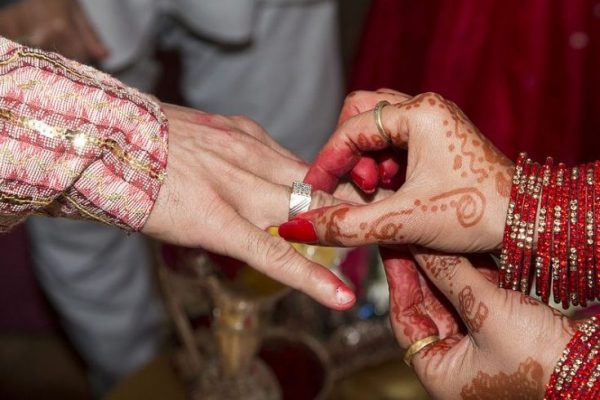
Raatri Jaga And Mudda Tikka
The families paint the symbols of the Swastika and Om on the walls and the floors during the Raatri Jaaga. For the Mudda Tikka or Sagai ritual, the groom and his family visit the bride’s home bearing gifts and sweets. The families exchange gifts and sweets, and the bride and groom exchange rings.
Pithi Dastoor
The Marwari wedding rituals include a Haldi ceremony. The close friends and relatives of the couple apply a Haldi mixture to the bride and the groom. The paste is an excellent skin ointment. The bride and the groom each have a bath after the Haldi. A traditional sweet called Ghungra is offered to them. The bride’s maternal uncle gives her some Shagun money for good luck. The groom’s uncle gives him the same.
Mahira Dastoor
The maternal uncles of the bride and the groom gift the soon-to-be couple expensive gifts such as jewelry, clothes, and other auspicious items.
Mehendi
The Mehendi ceremony is celebrated joyously. The near and dear in the family gather and elaborate Mehendi designs are applied on the hands and feet of the bride. The groom also has Mehendi applied. In current times, professional Henna artists apply designs to the hands of all the family members and guests who want them.
Mehfil Or Sangeet
The bride’s and the groom’s families gather together to celebrate the upcoming nuptials with song and dance. The Sangeet is the Marwari version of the bachelor or bachelorette party. The groom’s party has only men invited. The bride’s Sangeet has only women except for the groom, who is the honored guest.

Palla
A few hours before the wedding, the groom’s family visits the bride and gifts her with jewelry and bridal clothes that she wears for the Phera ceremony.
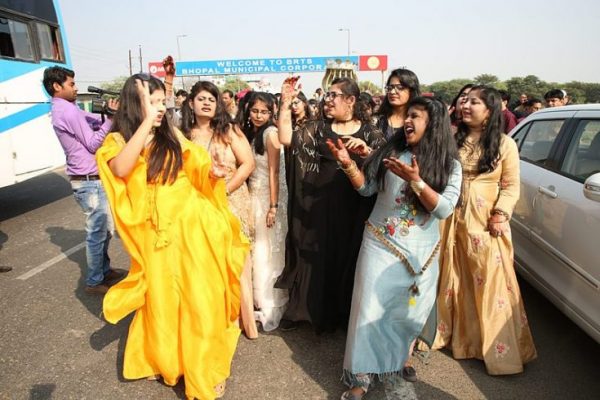
Baraat
The Baraat or wedding procession is a grand and fun affair. The groom usually arrives on horseback. Before he leaves for the wedding, his sister ties a golden thread around his head and makes a black kajal dot behind his ear to protect him from negative energies. The Barat is led by a musical band and friends and relatives who cheerfully laugh and even dance along. Instead of a horse, the groom may ride in a beautifully decorated open-top car in some families.
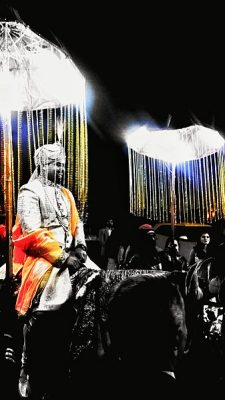
The Wedding
The groom hits the Toran or decoration above the wedding hall entrance to ward off negative energies. The bride’s mother welcomes him with Arati and sweets. The bride then puts seven types of Suhalis or snacks in the groom’s hands. The bride and the groom exchange garlands and this is called the Jaimala.
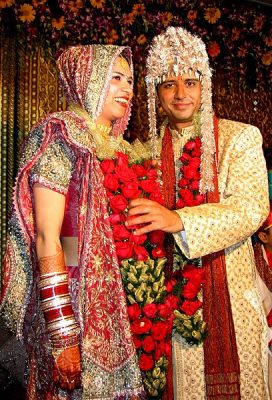
Granthibandhan or Ganthbandhan
The bride’s Chunni or veil is tied with the groom’s waistcloth signifying the marital bond. The knotted cloth is then placed on the groom’s shoulder.
Kanyadaan
The bride’s father lists the bride’s lineage and also asks the groom if he will take care of her. The bride is asked if she is willing to accept the groom’s surname and family, and they promise to take care of each other.
Pani Grahan
The bride’s father places her hand in the groom’s hand and pours water over it, solemnizing their marriage.
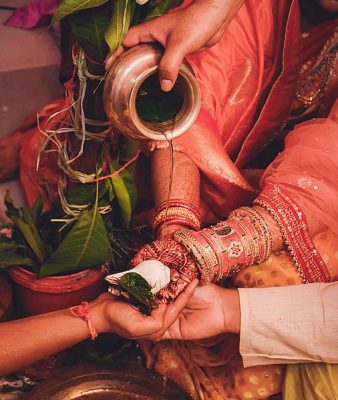
Saat Phere
The couple circumambulates the Homa fire seven times. The bride pushes a grinding stone with her foot on each circuit, symbolizing that she is pushing away obstacles. This is the Ashwaroham ritual.
Vamang Sthapna
The bride’s brother hands the couple a handful of puffed rice that they throw into the Homa fire thrice.
Sindoor Daan
The groom applies sindoor to the bride’s forehead, and his mother gives her a Nath ornament to wear.
Aanjhala Bharaai
The groom’s father places a bag of money in the bride’s lap, and she divides the money equally and gives it to her husband and sister-in-law.
Paharavani
The groom then sits on a new cloth, and the bride’s family bless him and give him gifts. The bride performs pooja at the threshold of her father’s home and breaks an earthen lamp as she leaves.
Sir Guthhi
After the wedding day, one of the older women in the family washes the bride’s face and combs her hair.
Jua Khilai
The bride’s Mami or aunt arranges many fun games on the morning after the wedding.
Bidaii
A Thali pooja is performed in the kitchen, and the bride is given a half-dried coconut filled with sugar and coins. She gives it to the groom’s mother later. The bride then leaves her parents’ home with her husband.
Bahu Agaman
The couple arrives at their marital home. The groom’s sisters playfully ask for bribes to let them in. The bride topples a jar of rice with her feet. She dips her feet in red dye and enters the house leaving red footprints. She touches ghee, jaggery, and money as soon as she enters. The new couple lights a lamp in the house Pooja temple.
